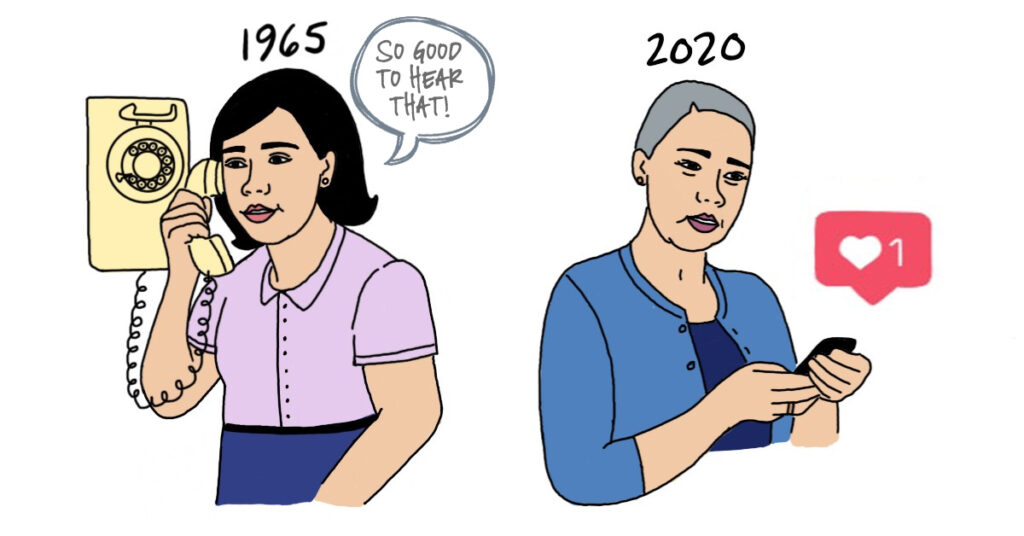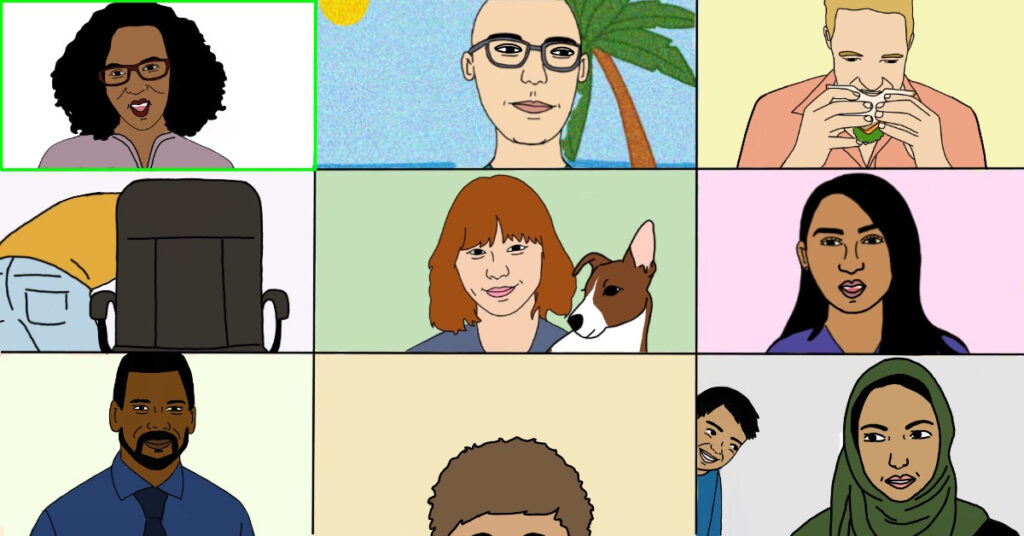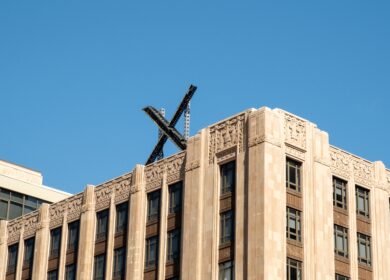
By Jackson Dulzo, Senior Account Executive
At Hoffman we’re increasingly executing integrated communications campaigns that roll earned, owned and paid media into a single client budget to reach B2B audiences. It’s here that traditional PR techniques like media relations and thought leadership combine beautifully with the new generation of publicity tools, including paid social ads and search engine optimization. These campaigns are some of our favorites to build and run, since the synergy between owned and paid media creates exciting results for us and our clients.
As you can imagine, these clients prefer to keep the details such campaigns private, but I’ve secured permission from our leadership team to pull back the curtain and delve into the nitty gritty behind one of Hoffman’s own recent B2B Facebook advertising campaigns. Let’s get started!
1. Spec out your slice of the Facebook B2B audience and target it directly
Given that defining key subsets of audiences is kind of our jam, we came into this project with a strong understanding of who we wanted to reach on Facebook: Decision makers among in-house communications teams at tech firms. In our case, “decision makers” meant people at the manager level and above, with an additional, nested audience of those at the director level and above.
With these specific B2B audience subgroups in mind, we chose three different landing pages with varied content: Tech PR, The Story is Always There and Storytelling Training. The broader “managers and up” B2B Facebook audience would be shown ads for both the Tech PR and The Story is Always There pages, while only “directors and up” would see ads for Storytelling Training. While all three landing pages carry a call to action (contact links) to generate new business leads for the agency, only the Storytelling Training page is primarily focused on our services, in this case remote storytelling workshops. The other two contain educational materials and offer industry insight to help build an authentic connection with website visitors.
To find and reach these B2B audiences on Facebook we used three types of targeting: Facebook’s standard “Detailed Targeting,” Facebook Pixel retargeting and lookalike audiences.
a) Reaching B2B decision makers on Facebook with detailed targeting
Detailed targeting allows you to advertise to people based on Facebook’s pre-set categories, typically including details like location, age, employer and interests. For our campaign, we used this as a base for each of the two audiences, primarily working with job titles and industries to reach new B2B Facebook users.
b) Retargeting B2B audiences with Facebook Pixel
Retargeting users with the Facebook Pixel leverages tracking code installed on your website to identify and advertise to users who have visited your site, or even specific pages. Using tracking code on hoffman.com, we tracked visitors to both Tech PR and The Story is Always There, showing visitors to one-page ads for the other. Additionally, visitors to the Ishmael’s Corner blog would be served ads for Storytelling Training, ensuring that we’d reach the right users with highly relevant B2B ad content.
c) Going after lookalike audiences
Lookalike audiences use pre-existing information (like an email list or Facebook Pixel data) and Facebook’s algorithms to find users similar to those who have already interacted with your company. Based on the aforementioned pixel tracking data, we generated three lookalike audiences for each of the three landing pages, making use of Facebook’s data to identify additional B2B prospects similar to existing website visitors in our target audiences.
2. Custom-tailor ads and adjust campaigns on the fly
In the ad copy itself we focused primarily on each page’s content, rather than heavy-handed verbiage around working with The Hoffman Agency. For visuals, we created two sets to A/B test against each other to see what would best appeal to our B2B target audience on Facebook: one leveraging stock images, and the other using bespoke illustrations from our in-house design team. While it may seem obvious that an original illustration would be the better ad visual, engagement/interest from the target audience is all that matters when it comes to successful social media advertising. To this end we would let the results do the talking; more on results later though.
Since this was the first time we had advertised to this audience, we structured our campaign in two parts. Week 1 would focus on landing page optimization and A/B testing the ad visuals. Week 2 would operate at a reduced spend, making use of the top performing assets for maximum cost efficiency. A key benefit of social media advertising is the ability to monitor campaigns as they run and make tweaks on the fly, but it’s still important to let ads run for more than a couple days to ensure that your results and analysis are accurate. Internet use can fluctuate wildly day by day and from audience to audience, especially on social media, so a full week of testing is recommended to minimize anomalies. In our B2B campaign, we also staggered the two audiences by one week to reduce advertising overlap and create more time for adjustments if needed.
With all this in mind, here’s how our Facebook advertising campaign was structured:

Week 1
With all eight ads submitted and approved a couple days before the start of Week 1, the B2B Facebook campaign began running as scheduled every day from 6 a.m. to 10 p.m., based on the user’s time zone. With many audiences it’s worth running ads around the clock, but in our case we already knew from existing Google Analytics data that our target audience isn’t browsing the internet or visiting the Hoffman website in the middle of the night.
With our Facebook ads now live, we monitored their performance in both Facebook Business Manager and Google Analytics to make sure everything was running smoothly. Facebook’s analytics tools are useful when it comes to clicks, impressions, reach, etc., but understandably lack web page engagement data. To this end we incorporated UTM code into each of the landing page URLs, allowing us to track the on-page performance of the traffic that each Facebook advertisement was sending to the site. In particular, we focused on Pageviews, Unique Visitors and Average Session Duration, all key indicators of how much people enjoyed the website content after clicking on our ads.
After the first set of Facebook ads ran for a full seven days, we took stock and found that our custom illustration had performed best for the Tech PR ads, while the stock-image-based graphic had performed best for The Story is Always There ads. This held true for the standard detailed targeting audience as well as the Facebook Pixel/lookalike audiences, with up to 10 times the number of clicks and cost per click down by as much as 60 cents on ads using the better performing visual. With this data in hand, we knew where to focus the remainder of our advertising spend to draw the most clicks and make the most efficient use of our budget in round 2 of our B2B Facebook advertising campaign.

Week 2
Kicking off the second week of Tech PR and The Story is Always There ads and the first week of Storytelling Training ads, Week 2 once again had eight active ads, but advertised to both of our Facebook audiences at the same time. Even though we ran our Facebook ads in a dozen large, tech-centric cities, the total number of real-life people in our target audience of B2B decision makers isn’t very high. For this reason we knew total click numbers wouldn’t be as high as what we see for our clients’ campaigns, so optimizing our Facebook ads to be as appealing as possible while striking a balance between cost efficiency and high-quality traffic was our core focus.
Re-running the Tech PR and The Story is Always There ads with the top performing visuals from Week 1 one helped us achieve much higher efficiency in Week 2, as did some small tweaks to the standard detailed targeting specifications. Overall this second run drove over 15% more clicks despite a 30% reduction in ad budget, with the average cost per click plummeting by 43%.
Meanwhile, the first run of our Storytelling Training ads capitalized on my personal favorite illustration from our creative team. Despite targeting an audience 96.5% smaller, it established a baseline cost per click in line with the first run of the other two B2B Facebook ads. Ads using stock images for both standard and pixel-based targeting brought in only half the total number of clicks, once again making it easy to pick which visuals would be used in the second leg.

Week 3
The final week of our Facebook B2B advertising campaign was also the quietest, with two ads left running instead of the eight we managed in Weeks 1 and 2. Paid social media campaigns with more focused audiences tend to see less variance week to week, as macrosocial trends hold less influence over smaller, less diverse groups of people. Despite the relative predictability of this final run, the Storytelling Training ads did not disappoint, pulling in ~100 clicks despite a 30% reduction in budget.
It’s worth noting here that Facebook Pixel-based targeting is particularly useful when it comes to these smaller, more unique audiences on Facebook. Social media advertising in general is great for reaching very specific groups of people, but it’s still difficult to do so when the audience isn’t primarily defined by “normal” demographics like location, job title or age. Re-targeting website visitors and building new audiences based on the minute shared characteristics of that group makes it possible to reach a much larger group of the “right” people, and the results of our campaign show just how powerful that can be for B2B advertising campaigns.
3. Measure the results and analyze trends
In the end, our Facebook B2B advertising campaign generated around 1,000 clicks on our ads, translating to 735 Google-Analytics-verified page views. These visitors spent a total of 2,182 minutes on the three landing pages, and accounted for 54% and 69% of total visitors to The Story is Always There and Tech PR respectively. Looking at total website visitors, the Facebook ads campaign boosted traffic to hoffman.com by 8.8% and ishmaelscorner.com by 14.5%. Finally, the Facebook ads reached more than 100,000 people, helping spread the Hoffman name to in-house communications professionals across the United States.

Across both audiences, ads incorporating Pixel-based targeting (including lookalikes) drew more than double the number of clicks as their standard Detailed Targeting counterparts at the exact same budget, resulting in a 50% reduction in cost per click. Both forms of targeting are important to a successful B2B Facebook advertising campaign, but taking advantage of Big Blue’s algorithm helps stretch ad budget further, reaching more of the “right” people without having to dump more money into ads.
Looking at our smallest B2B audience and most direct offer, the Storytelling Training ads, visitors here spent an average of five minutes on page, a full minute and a half longer than the average visitor to Ishmael’s Corner. Visitors to Tech PR and The Story is Always There averaged well over two minutes per visit, also above average for our website. These stats indicate a very engaged audience of B2B decision-makers and are more direct evidence of a good return on investment than Facebook’s surface-level results data.
Advertising stats like cost per click and total impressions are important, but often fall flat when attempting to quantify the true quality of a Facebook ads campaign. We could have targeted this campaign to every person with a Facebook account in the United States and raked in mountains of clicks, but how many of those people would have stayed on our website after that click? How many would have actually remembered Hoffman? Through a perfect balance of audience definition, technical targeting, landing page selection and ad craftsmanship, we focus and optimize advertising budget for the largest impact on the “right” people.
Reaching these “right” people is a constant battle in public relations, which is why pitching the right journalists at the right publications with the right stories is such a focus of ours at Hoffman. These same reasons are why paid social media advertising is a perfect match for PR efforts. Companies can spread their resources, products and announcements directly to stakeholders and potential new fans with even a small budget, further amplifying the effect of existing marketing content.
If you have any questions about our B2B Facebook advertising campaign, or would like to discuss social ads for your company, we’d love to hear from you! Feel free to drop us a line on Twitter @dailybrew, or reach us via email using one of the links below:
(Or you always can click on our ads the next time you see one)






